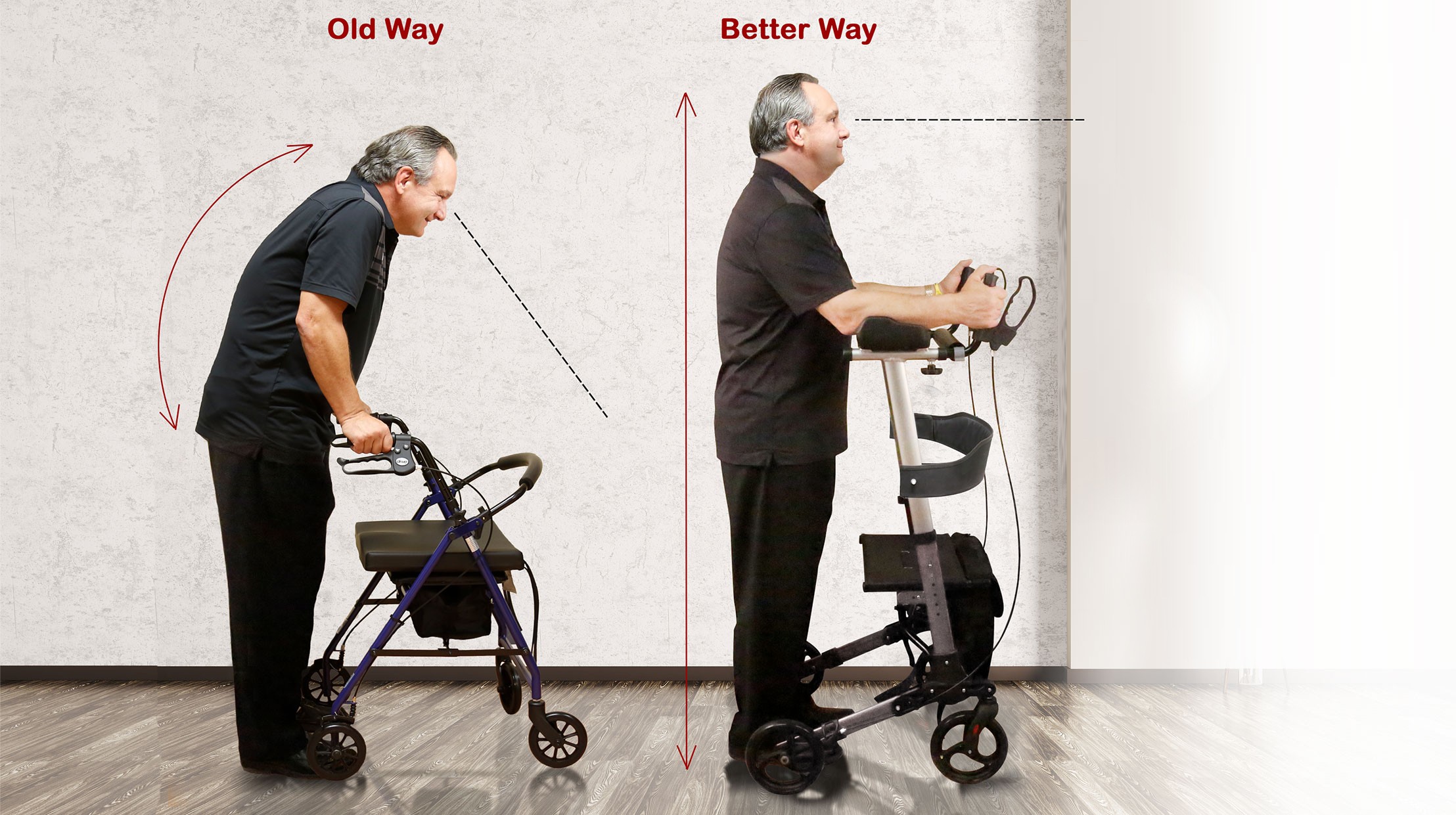Jun 23
2020
Why Upright Walkers Are Such A Significant Upgrade For The Immobile
 If you or a loved one has reached a life stage where using a mobility aid, like a walker, becomes a necessity in maintaining a sense of normalcy and independence, you’ll want to familiarize yourself with the mobility aid market. Once you outline a list of must-haves, you can purchase a walker suited to the physical needs and the lifestyle needs of the operator.
If you or a loved one has reached a life stage where using a mobility aid, like a walker, becomes a necessity in maintaining a sense of normalcy and independence, you’ll want to familiarize yourself with the mobility aid market. Once you outline a list of must-haves, you can purchase a walker suited to the physical needs and the lifestyle needs of the operator.
Scrolling through the wide range of models available on the market can make choosing the right walker unnecessarily challenging. Though the traditional walker is, typically, the most popular choice among buyers, the upright walker (the traditional walker’s upgraded counterpart) is gaining rapid popularity, and in recent years, has been marked as a personal favorite for the immobile and physically-disabled.
There are many reasons why you should upgrade your traditional walker to an upright walker. Here are some of the most common bonuses.
Maintain mobility
Upright walkers are designed to enhance walking comfort, which in turn, allows the user to remain mobile for longer durations of time, without assistance. Unlike the standard walkers that force the user to hunch over, exerting uncomfortable pressure on your back and wrists, the upright walker is designed to encourage a sense of independence, while supporting better posture, especially for seniors.
The most noteworthy feature of this mobility aid is its adjustable height, meaning you can adjust the height settings according to the operator’s stature. Whether the user needs to stand upright or bend over at a more dramatic angle, the upright walker can be adjusted to accommodate your specific needs. These customizable settings are not only convenient but have the power to alleviate any existing back and/or wrist strain the operator may have experienced with their former mobility aid.
More Customizable
Traditional walkers are engineered with a select few customizable features for their users to enjoy. However, the traditional walker can’t compete with the upright walker’s much-longer list of adjustable features that make it easy-to-use and a perfect match for your mobility restrictions. The upright walker’s incredibly flexible features conform to the operator’s daily, weekly, or monthly needs, as their physical strength slowly deteriorates or as flare-ups appear. Regardless of the state of their physical condition, their upright walker will address the user’s specific needs, even as they age or as the injury progresses. With an upright walker, you won’t have to worry about replacing your loved one’s mobility annually, which can save you a significant amount of money in the long-run.
Ideal for indoor and outdoor use
Upright walkers are designed for use in both indoor and outdoor spaces and can easily adjust to different terrains. If you only need a mobility device that helps you move freely around your home or want a walker that’s built to conquer the non-level surfaces and unpredictable weather conditions of the outdoors, an upright walker is up to the challenge.